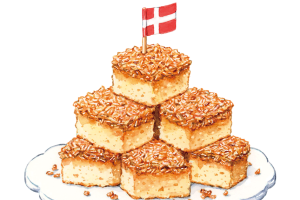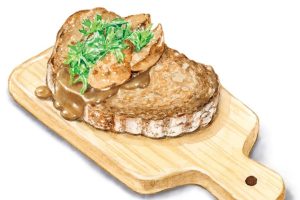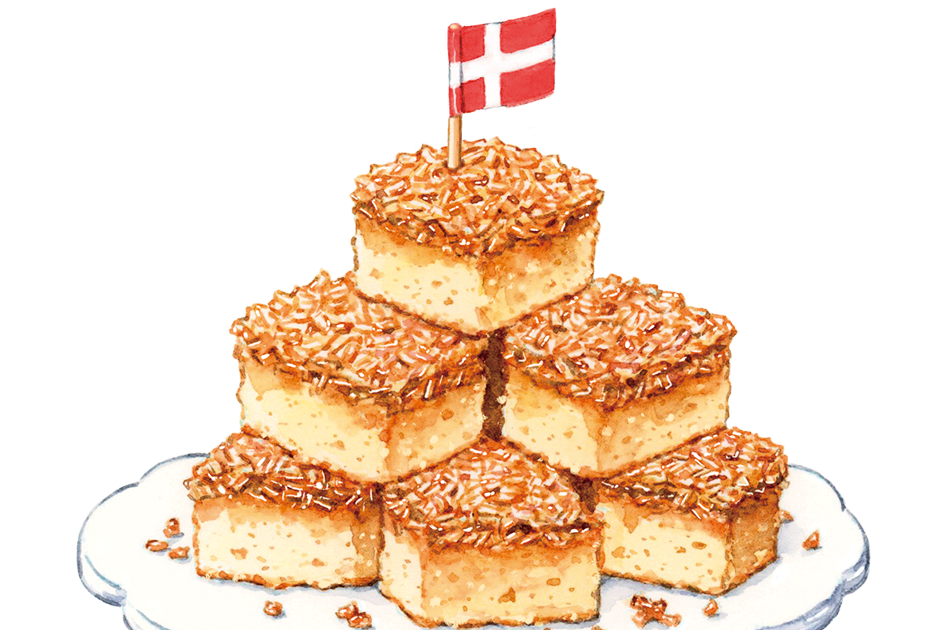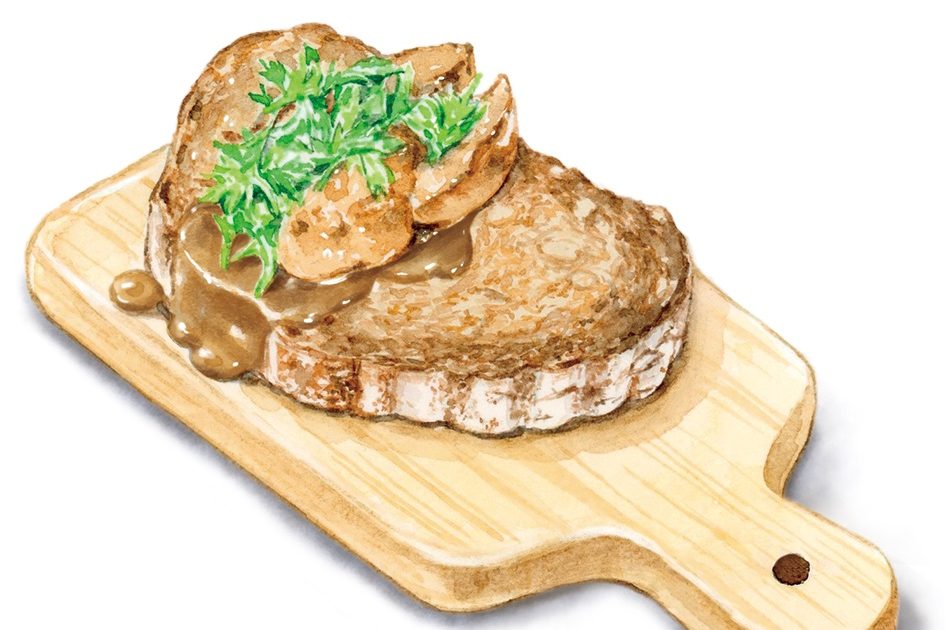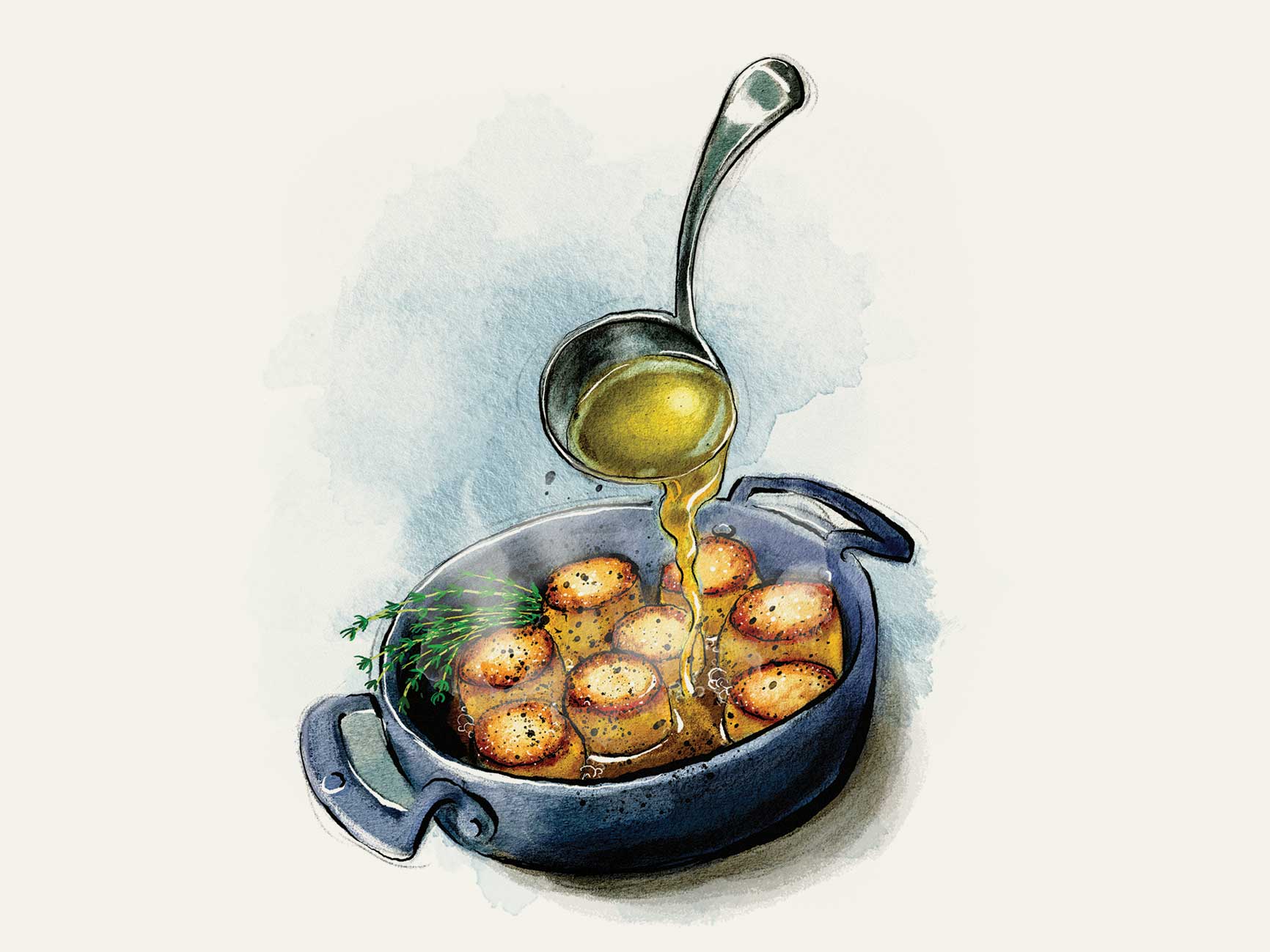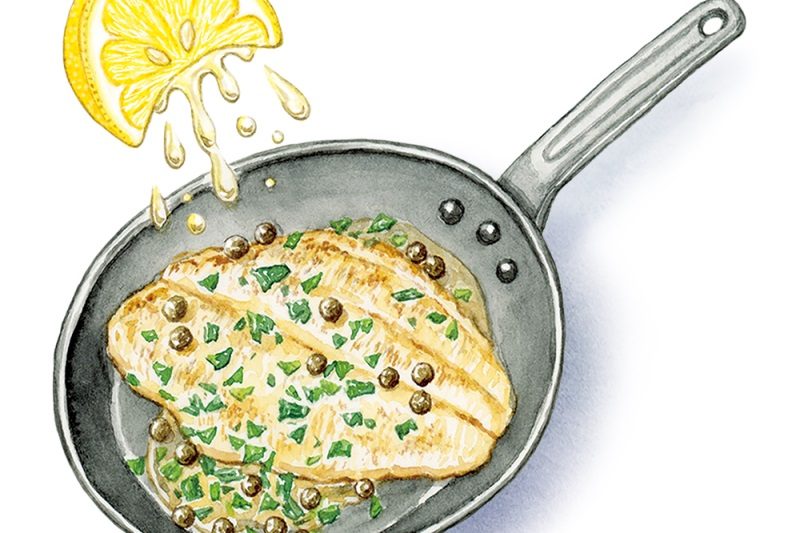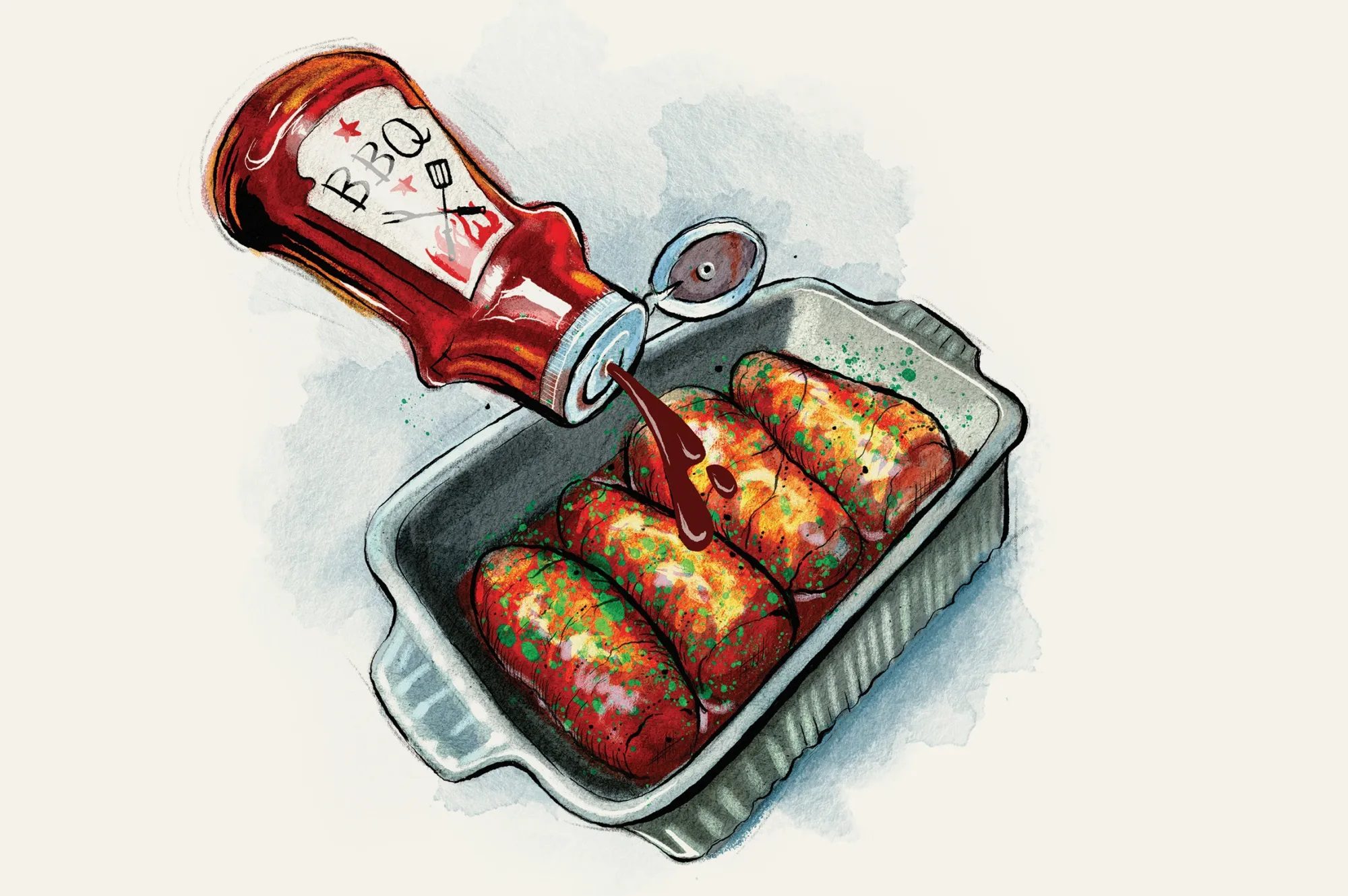I admit to feeling a little intimidated by charcuterie. I have a clutch of books on my shelf all laying out in step-by-step detail how to craft your own salami or whip up a perfect pancetta. They’re well-thumbed, but not a single one has a cooking stain on it.
I’m just too nervous when it comes to the scary stuff. I’m talking about the drying-sausages-hanging-from-the-rafters kind of charcuterie. I’m talking about jerry-rigging anti-pest guards to protect your hams. I can’t quite get past the fact that charcuterie requires hanging meat somewhere in my house, which feels at best frightening and at worst like I’m actively inviting botulism into my home. I’ll say it: I’m a charcuterie coward.
Rillettes are a cooked pork spread, a little like pâté, although don’t let the French hear you say that
But what I sometimes forget is that charcuterie is just a means of preserving cooked meat. And that doesn’t need to mean an ultra-marathon of preservation; it could just be a gentle amble. So let’s step back and see what happens if we cook a bit of pork.
Rillettes are a cooked pork spread, a little like pâté, although don’t let the French hear you say that. They’re made by cooking lean pork and pork fat together very, very slowly, until the fat melts and the meat collapses. It’s a lot like confit, and in the same way, the excess fat is then used to seal the cooked meat in pots, which, when cool, forms an impermeable layer, eliminating oxygen and preserving the meat. It’s really the French version of potting meat; where the English used butter to create an airtight product, the French used the fat from the animal. Of course, now we have fridges and freezers, so having to preserve large portions of meat is far less of an issue. The reason, then, to make rillettes today is that they’re delicious.
Rillettes can be made of pork, or rabbit, or duck, or a combination thereof, but classic rillettes are made solely from pork. These rillettes have been made in Tours in France since the Middle Ages, where they were a peasant food that used off-cuts. This was picked up in the 18th century by local butchers, who began to use whole joints for the process. They boast “protected designation of origin” status, which means that if you want to call your product “rillettes de Tours,” they need to be made in the city and follow a particular recipe. Even the color of the finished product is dictated by legislation.
My rillettes don’t stray too far from the prescribed recipe. I prefer brandy to the more traditional wine, and I add it after cooking, just enough to thrum through the pork. And I cook the whole thing in the oven, rather than on the hob, because it requires less of me and the effect is very similar. The pork is cooked with bay and thyme, crushed black peppercorns and juniper berries, and then finished with a generous grating of nutmeg. Just before potting, they need to be seasoned robustly with lots of salt and pepper, remembering that you are tasting something warm which will ultimately be eaten cold, and low temperatures dull flavours, so seasoning should be exaggerated.
Some rillette-makers use a stand mixer with a beater attachment to really go to town on the meat, almost whipping it into a mousse. But I like it to retain some texture and, frankly, still to look like meat, more terrine than parfait. A wooden spoon will do the trick, combined with a little elbow grease, and the pork will break down very quickly. If covered thoroughly with the melted fat, the rillettes will keep for weeks in the fridge – but once you’ve broken into the fat layer, finish the pot within a couple of days.
The richness of the rillettes demands contrast when served: they need crunch, sharpness, sweetness. So I serve mine with sliced French stick, warmed briefly in the oven to soften the fridge-chill shock of the rillettes, and always with lots of the smallest cornichons that I can find, and then something bittersweet and sprightly. I love marmalade, actually, a proper one, with Seville orange, or an Italian mostarda di frutta – neither of which are even faintly authentic accompaniments, but if they’re delicious, who cares?
Serves: 8-10 as a starter
Hands-on time: 30 minutes
Cooks: 4 hours
- 2 lbs pork shoulder (1kg)
- 10 ½ oz pork belly (300g)
- 20 black peppercorns
- 20 juniper berries
- 1 tbsp fresh thyme
- 4 bay leaves (plus extras for garnish)
- ¾ cup water (200ml)
- ¼ cup brandy (60ml)
- ½ tsp freshly grated nutmeg
- Black pepper, freshly ground, to taste
- Preheat the oven to 300°F/265°F fan (150°C/130°C). Remove any rind from the meat and discard. Dice the belly, then pare the fat away from the shoulder meat, and dice both fat and meat into 2in cubes. Place all meat and fat in a large, heavy-bottomed pan in a single layer
- Crush the peppercorns and juniper in a pestle and mortar, and add to the meat, along with thyme and bay leaves. Add 3/4 cup water, and bring to a gentle simmer. Once simmering, place a tight-fitting lid on the dish, and transfer to the oven
- Cook for four hours, stirring every hour to ensure it’s not sticking (add a splash more water if it is). After four hours, the fat should have melted, and the meat should be extremely tender
- Spoon the meat into a sieve, collecting the liquid fat in a bowl underneath. Transfer the meat to another bowl, and beat with a spoon until it has completely broken up and begins to come together into a near-paste
- Stir in the brandy, then season with salt, pepper and nutmeg
- Spoon the meat into ramekins, pressing down to eliminate air bubbles. Place a bay leaf on top of each ramekin for garnish, and then spoon on the reserved fat until you have a complete layer of fat sitting on top of the meat. Refrigerate until completely cold











